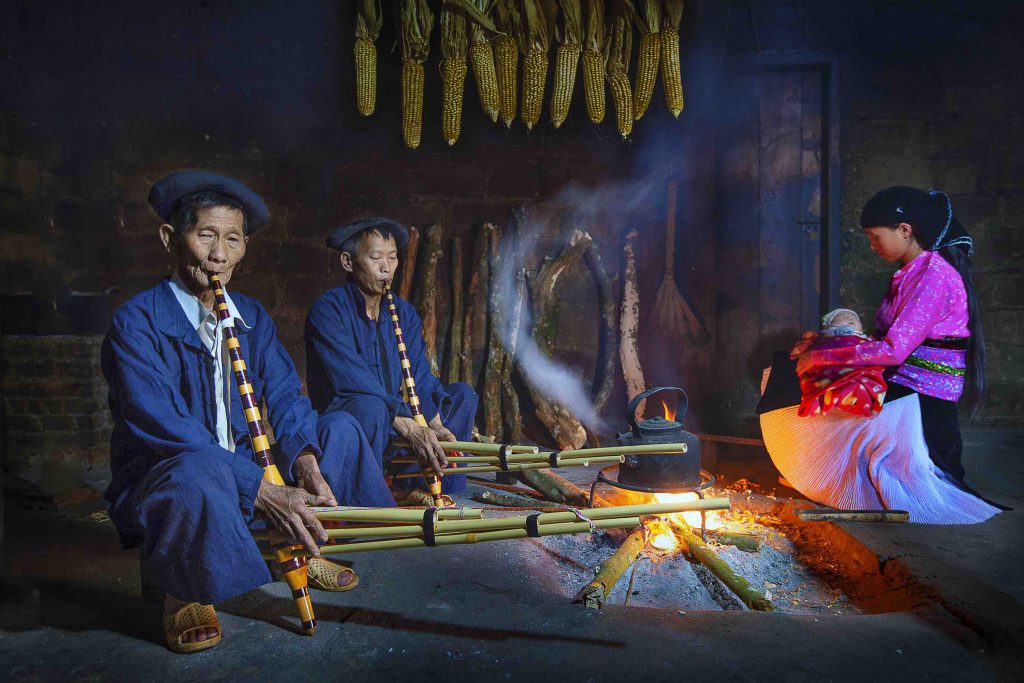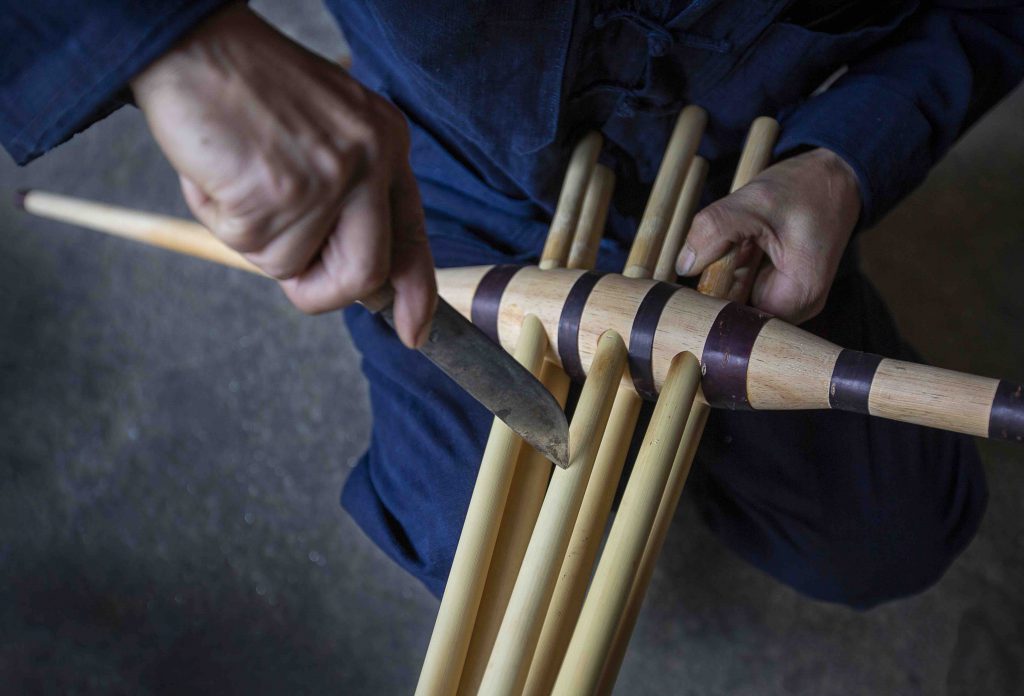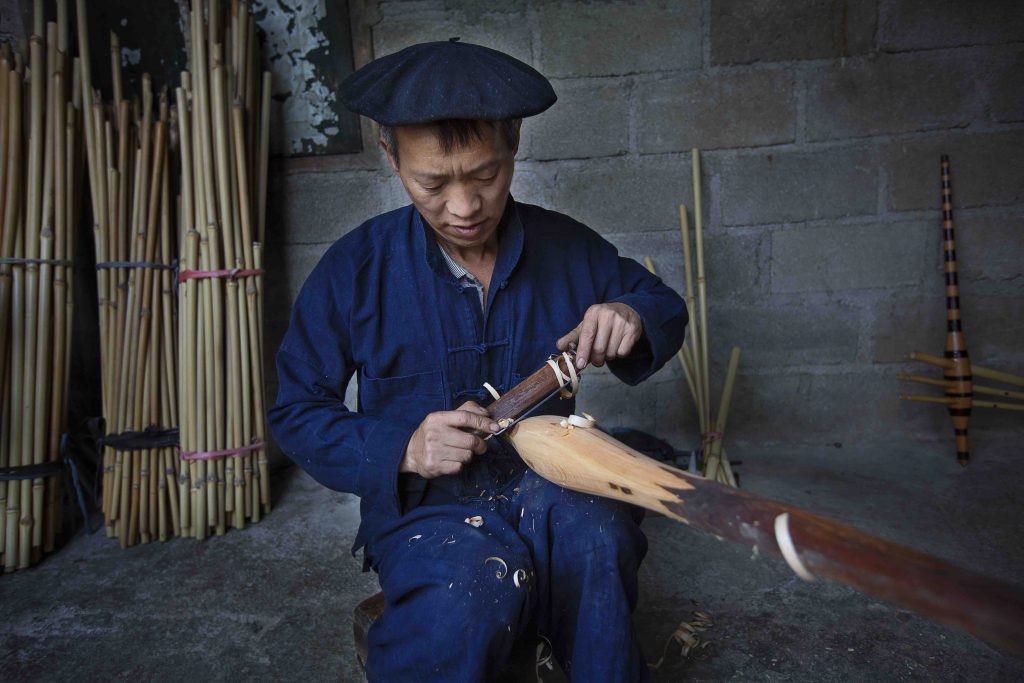Nguyen Huu Thong
Wandering through the mountains and Hmong villages, one can hear notes of echoing khèn panpipes. These instruments are played on many occasions—from bustling spring festivals to mournful family gatherings. The sounds produced by the khèn connect the Hmong community, convey deep emotions of love, and are believed to link the earthly realm with the spirit world.

Hmong people have a touching legend about the origins of the khèn, known as the “krềnh” in their language. Long ago, there was a family with six sons who were well-behaved, hardworking, and devoted to their parents. Every day, the brothers went to the forest to gather firewood and hunt birds and animals to support their elderly parents. Unfortunately, the mother fell gravely ill and passed away. Overcome with grief, the father and sons lost their appetite and couldn’t sleep. Lost without his wife, the father soon passed away. Burdened by compounded sorrow, the six sons all passed away one after another. To commemorate these dutiful sons, the villagers crafted six khèn pipes from dried bamboo stems, joining them together to form the khèn. The sound of this instrument rose up, both grand and mournful, embodying brotherly bonds. The khèn’s melodies echoed through the mountains and forests, as if engraving sorrow into the precarious rocks.

Initially, the khèn was only played by Hmong men during funerals to bid farewell to the deceased. Bearing the resonance of the mountains and forests, this instrument eventually became an indispensable spiritual tool in Mong people’s communal activities.
The khèn has become a symbol of Hmong culture, used by every family in many joyful and sorrowful moments, from New Year festivals to celebrations, from engagements and weddings to farewells of departed loved ones. In their folk songs, the Hmong express their faith in the sacred sounds of the khèn: “If a boy doesn’t know how to play the khèn, the corn plants won’t grow. If a girl doesn’t know how to listen to the khèn, the stream won’t know where to flow”.
While many people are proficient in playing and dancing with the khèn, few remaining artisans can craft these sacred instruments. Within the Mong community, some artisans have been making khèn for decades, including Mr. Mua Mi Sinh from Sang Pa B hamlet, Meo Vac Town, Dong Van District, Ha Giang Province. The khèn has been his companion since childhood, when he followed his father to villages across the rocky plateau. Mr. Mua Mi Sinh learned his father’s craft and has been making khèn panpipes for nearly 30 years. His experience and skill enable him to create khèn that produce stirring sounds.
“To make a khèn, it is essential to have skillful and meticulous hands,” shared Mr. Mua Mi Sinh. The instrument’s compoments, such as the resonator, pipes, and reeds, must be carefully planed, carved, and hollowed so they can be assembled without gaps. Creating deep and high tones is a unique secret involving a thin piece of brass, used to make the reed, also known as “the khèn’s tongue”. Not counting the time required to gather and dry the materials, crafting a khèn takes three to five days.

While Mr. Mua Mi Sinh supports his family by making khèn panpipes, he is always eager to pass on the arts of making, playing, and dancing with the khèn to the next generation, so that the unique cultural features of the Hmong people are preserved for the future. It is meaningful that authorities in many places like Ha Giang province have recently implemented programs and activities to support Hmong people in highland areas to maintain and develop their traditional khèn-making craft. These instruments are displayed and introduced at many cultural fairs and exhibitions within and beyond the province. As a result, more people are learning to craft khèn, this instrument is gaining wider exposure, and Hmong people feel more hope that their efforts to preserve their unique culture will succeed.










